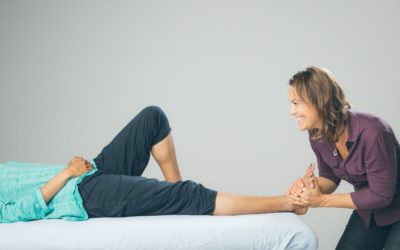A fabulous interview with Susan Clinton, Women’s Health Expert and Orthopaedic Manual Physical Therapist
How did you become interested in the Women’s Health Specialty and how long have you been doing it?
I began treating clients with pelvic floor dysfunction, pain, GI and urinary difficulties of all ages since 1995. Dr. Louis Wall (author of the Urogynecology Textbook) was practicing at LSU in New Orleans and walked into my clinic and announced that he needed a PT to assist him with the care of his patients. He then proceeded to tutor me in the nuances of the internal pelvic regions – including the anatomy, physiology and neurology of the region. I was hooked immediately! I quietly opened this aspect of my practice – thinking “There won’t be that many patients; let’s see how it goes!” Within 6 months my schedule was booked and I had a waiting list of 2-3 months. The population quickly began to include pre and post natal, bowel dysfunction, post oncological and autoimmune dysfunctions. It became very clear to me that I needed to expand my education in this area and discovered very few courses existed to guide me. I began working on developing a network of individuals that were also treating this population and began the task of self-education in the medical library. Most of my examination and intervention techniques were developed through clinical reasoning with some guidance from the sparse literature. The challenge was engaging, enlightening and exciting! As I grew in this practice I had the privilege to meet, study, work and write alongside of other practitioners that were the pillars in this field. In 2009, I became part of the inaugural class to receive their Board certification in Women’s Health Physical Therapy
How did you become interested in the specialty of Orthopaedic Manual Physical Therapy (OMPT)?
My career as a PT began in the acute care/rehab sector of health care. As an outpatient PT in a rehab setting I began treating many spinal cord injured clients that had shoulder and cervical dysfunction from overuse injuries. This quickly became the gateway for me to begin to add orthopedic examinations and interventions on individuals with neurological injuries and led to my Board certification in Orthopedic Physical Therapy in 2005. The holistic approach of this part of my practice was very appealing to me and I began to make many connections about movement, strength, coordination and motor control. This progressed to the treatment of persistent pain and complicated cases. After the addition of the pelvic health and other conditions, I began to explore the effect that remote regions (especially the head/neck/thorax and knees/feet) had on systems within the trunk and pelvis. I explored and found the NAIOMT system of OMPT education to fit with my clinical reasoning and holistic approach to patient care.
What advantages do you see in having both specialties?
The advantages of both specialties has improved the efficiency of client examination and interventions based on the client’s goals and function they wish to improve or achieve. Understanding the physiology of the GI, UI, hormonal and immune system in concert with orthopedic/neurological dysfunction aid in an improved comprehensive management of symptoms as simple as stress urinary incontinence to persistent pain. The addition of orthopedic manual physical therapy (OMPT) has allowed me to efficiently apply specific interventions to treat joint stiffness and improve soft tissue mobility, as well as understand how dysfunctions in one region can affect areas in others.
What have you done and what do you plan to do with your training?
I graduated with a DScPT from Andrews University and completed my Fellowship with NAIOMT in December, 2013. I have applied for my official FAAOMPT from the American Academy of Orthopedic Manual Physical Therapists. I have had the privilege to move into arenas for teaching at the University level as well as professional education at the international level. I have also developed and directed a Women’s Health Physical Therapy Residency program for 6 years and I am also a member of the credentialing body for orthopedic and women’s health residencies for the APTA. In 2014, I opened a co-owned private practice to further my work with clients, provide community and professional education, and continue to write and provide clinical education.
I have a modest presence in the social media world and have connected with wonderful practitioners from all over the world. It is fun to push good research and excellent practice trends within a group of orthopedically minded pelvic health therapists that gather under the #pelvicmafia.
Would you recommend this path to others?
Absolutely! There is a tendency for those whom practice generalized orthopedic physical therapy to ignore the pelvis and the pelvic floor. This region is the “floor” of our dynamic deep trunk muscles and needs to be considered in movement and function. On the other hand, those specializing in pelvic health need to consider the effects of the orthopedic, neurological and vascular structures and their effect upon the pelvic floor. I also believe that the prenatal and postnatal population is extremely underserved and having both specialties can improve the PT examination and intervention in this population.
Why would you recommend certification and/or fellowship compared to just taking classes?
Traveling the route of fellowship/certification vs. open course work depends upon the dedication of the clinician to accumulate, assess, and achieve success in any given field. Open classes are great for exploration of content, thought process and reflection. However, to truly achieve mastery in any one area the route of a fellowship program is extremely beneficial. The program through NAIOMT requires completion of core course work that cumulates into written examination, oral practical examinations, and written case histories. In addition, there are other requirements that challenge the clinician in the field of research, academic pursuit and practicing with a clinical mentor within the organization.
Susan C. Clinton PT DScPT OCS WCS COMT (awaiting FAAOMPT)
Embody Physiotherapy & Wellness, LLC
400 Broad St. Ste 1006
Sewickley, PA 15143
412-722-3222
Fax: 412-440-7930
Bio: Susan C. Clinton PT, DScPT, OCS, WCS, COMT received her Physical Therapy degree from Southwestern Medical Center in Dallas, Texas, Masters of Health Sciences at LSU Health Science Center in New Orleans, Louisiana. She completed her Doctor of Science degree at Andrews University in Berrien Springs, Michigan and graduated with her NAIOMT fellowship in orthopedic manual therapy in 2013. As a Board Certified Clinical Specialist in Manual Therapy, Orthopedics and Women’s Health, she has been actively treating patients with pelvic floor, urinary, bowel, reproductive, oncology, persistent pain, sports injuries and post-surgical diagnoses. She currently practices in Sewickley, Pennsylvania and is the co-owner and founder of Embody Physiotherapy and Wellness, LLC. Susan is active in teaching and research as an adjunct instructor for the University of Pittsburgh and Chatham University. Additionally, she is an international instructor and presenter of post-professional education in women’s health and orthopedic manual therapy. Her research activities include publications on chronic pelvic pain and clinical practice guidelines for the APTA Section on Women’s Health and Orthopedic Section. Susan is active with the American Physical Therapy Association, serving in governance as a local delegate, and as the Chair of the Clinical Practice Guidelines steering committee for the Section on Women’s Health. She is the past secretary on the Section on Women’s Health Board of Directors and the former President of the Performing Arts Special Interest Group of the Orthopedic Section of the APTA. She has served as an item writer for the board certification examination and is a member of the credentialing committee with ABPTRFE.





0 Comments